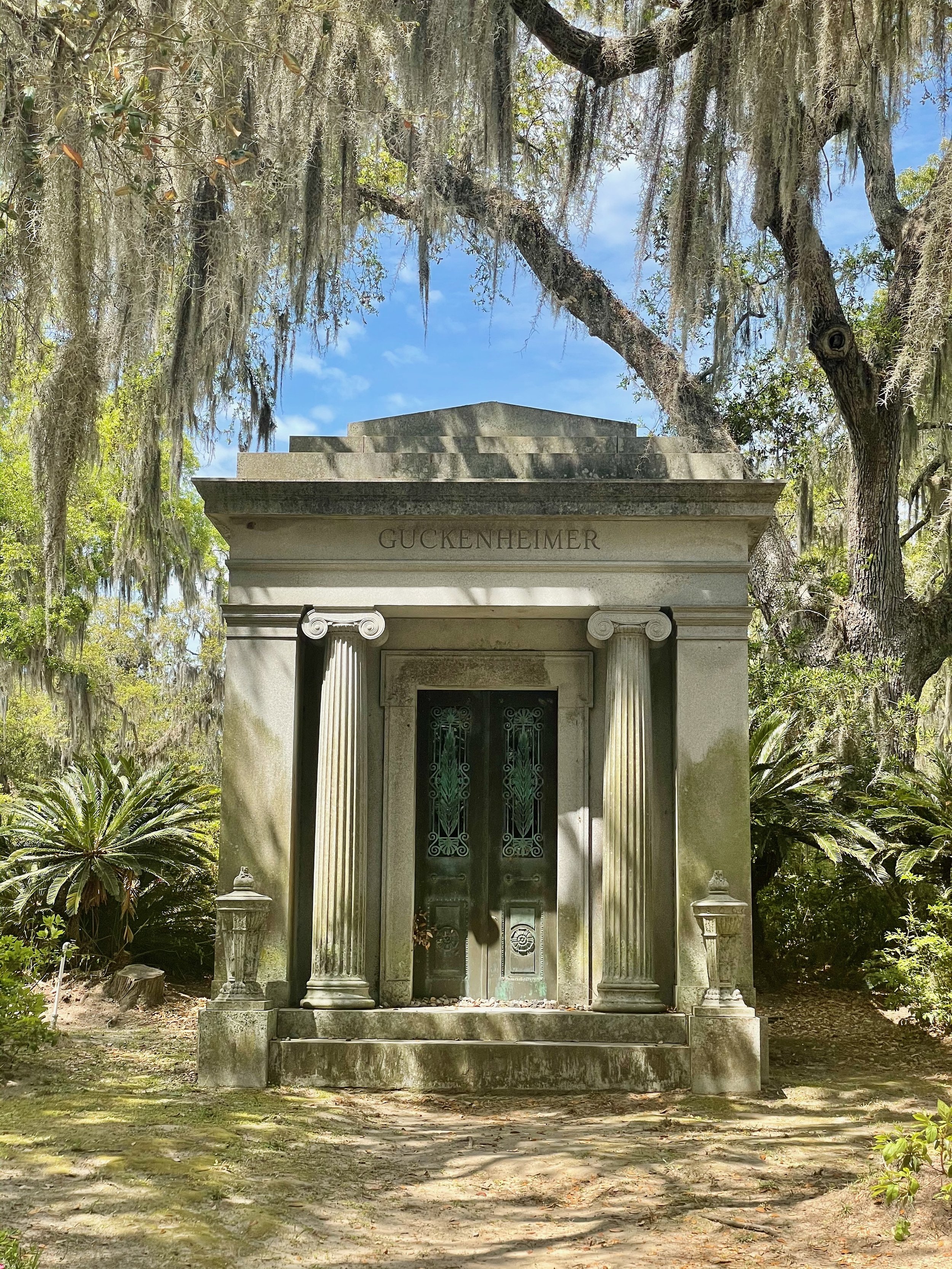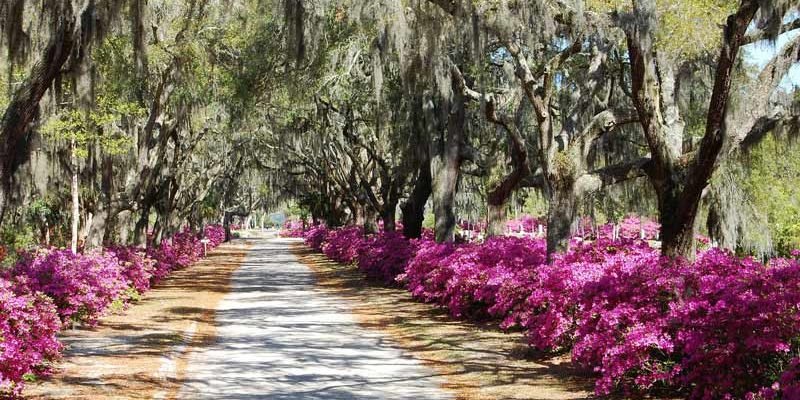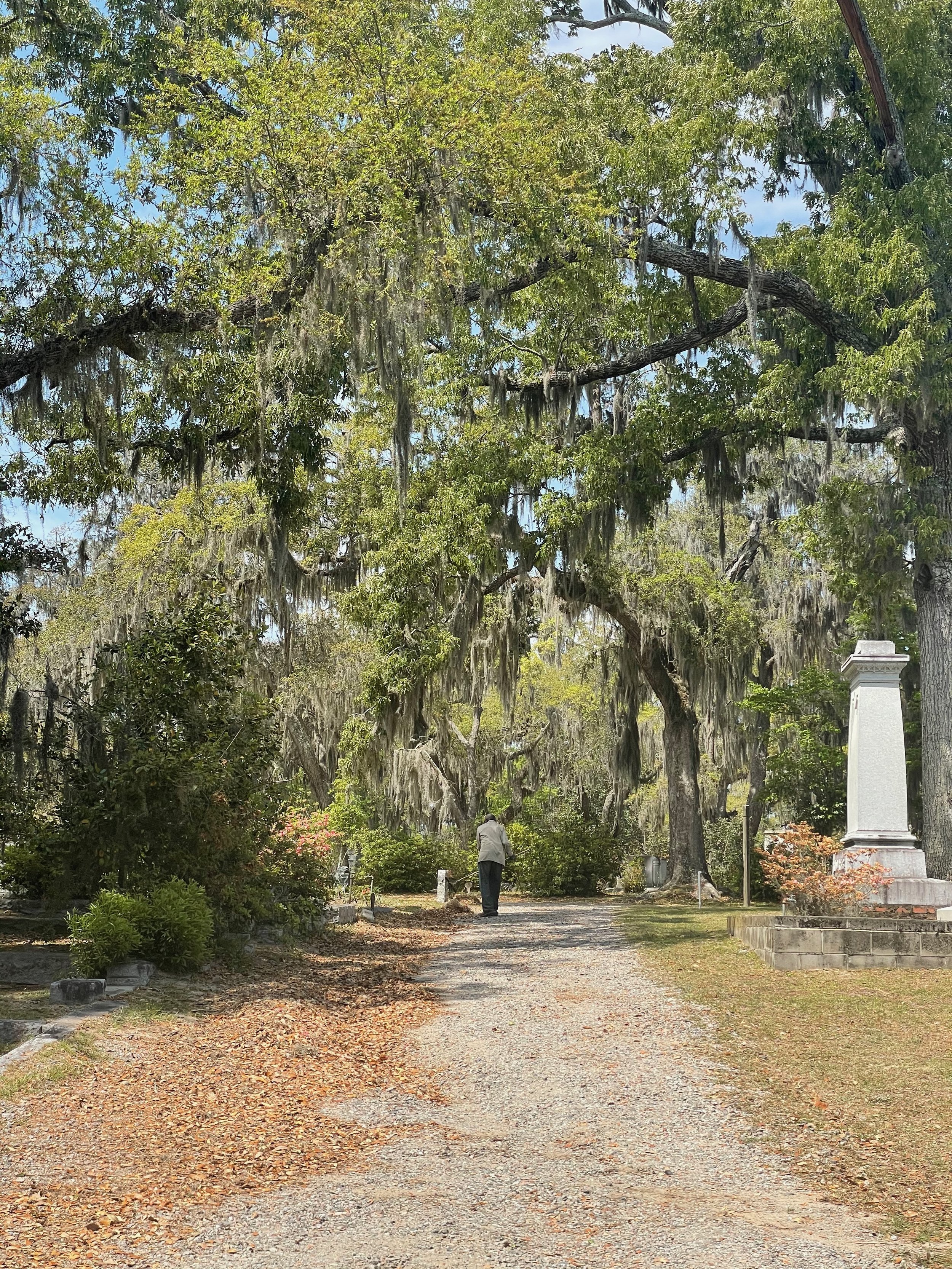Bonaventure Cemetery
Evergreen Cemetery
Location: Savannah, Ga, United States
Sitting on a bluff off the Wilmington River within Savannah’s city limits sits 160 acres of an old plantation lined with moss covered oak avenues and Victorian gardens. It might sound more like a real estate pitch or dream home, but this is a description of the grounds of Bonaventure Cemetery. The history and hauntings from the past generate 45,000 visitors a year yet the real attraction is the scenic avenues and gardens inside. It has been named one of the most scenic cemeteries in the world and served as inspiration of artists for years. Bonaventure is open to the public 8-5pm daily and free to enter. From visiting loved ones, ghost tours or midday strolls, this cemetery offers so much. Ironically, most people are familiar with Bonaventure or at least an incredibly famous statue within the grounds. Known as the bird girl but to many, the book cover of Midnight in the Garden of Good and Evil was in Bonaventure. The novel cover released in 1994 reignited cemetery tourism after being published. Prior to being a scenic burial ground Bonaventure had a vastly different life.
In around 1760’s an English Colonel John Mullryne decided to settle into Savannah, Georgia and build a plantation on the bluff of what is now known as the Wilmington River. Comprised of 600 acres Mullryne decided on its famous name “Bonaventure” meaning “good fortune.” He created avenues of oaks on the acreage each planted 15 feet apart. These oaks would later grow into the famous avenues in the cemetery today. In the late 1700’s during the Revolutionary War the Colonel and his son-in-law Josiah Tattnall were loyalist to the British Crown. This would make Bonaventure’s future complicated in years to come. After the arrest of royal Governor Sir James Wright in 1776 both men assisted in his escape via Bonaventure to a British Vessel and then they fled city. It then fell into American allied hands but was short lived due to the Siege of Savannah of 1779. After the siege it is rumored to have been a hospital for French, Haitian and allied casualties who are likely the first buried on the grounds. Savannah remained in British hands for the rest of the war but in 1783 after defeat was turned over to the Americans who confiscated the land. It was briefly sold to John Habersham but then 1785 sold back to Tattnall’s son who would become the Governor of Georgia.
Tattnall’s ownership would be critical to the future for Bonaventure as they created the first cemetery on the plantation. The Governor’s wife Harriet was the first to be buried in the family plot. The tattnall’s would own Bonaventure until 1846 when it was sold to a man named Peter Wiltberger. He then decided to use 70 acres of the land for public cemetery bringing Bonaventure Cemetery into existence. This was in the age of Victorian gothic cemetery gardens where the wealthy created a haven of beauty for mourners among the graves. Bonaventure was no different and became a cemetery where the wealthy created funeral art and monuments to loved ones lost. Wiltberger felt Bonaventure needed a new name to compare it to the other rural garden cemetery in Savannah, Laurel Grove. He felt the new name needed to stress the beauty of the lush garden landscape better and thus Bonaventure was renamed Evergreen Cemetery.
It was during this time that artists, travelers, and the public really started to enjoy the beauty of Bonaventure. The oak trees were finally mature enough to give the cemetery a romantic southern gothic feel. Draping over graves with their branches dipped in moss with large avenues to stroll through, saw inspiration for the art community. The first being a poem “Bonaventure by Starlight” by Henry Rootes Jackson, published in the Southern magazine The Orion. Sierra club founder John Muir, who found himself stranded in Savannah, famously slept among the graves while documenting the plants and nature for his 1000 mile walk to Florida from Kentucky. Photographers, artists, and the public’s admiration for the ground's beauty became well known and documented. The visual art created for monuments in the cemetery by craftsmen has a lengthy and prolific list from all over the United States. It feels less like a cemetery and more like a sculptural garden. The sculptures, carved headstones, obelisks, and architectural mausoleums for those with the means to create lavish memorials to the dead saw no limitation on cost. The famous Philadelphia marble company Struthers and Sons was used by many of Savannah’s elite. The most famous sculptor is John Walz, he has around 70 known works in the cemetery with even more possible. His most famous work is a statue of 6-year-old Gracie Watson.
Watson’s statue leads us into a more intriguing area of the cemetery, its haunts. The famous work of Waltz is thought to be haunted. Known as ‘Little Gracie’ Watson died at the age of 6 from pneumonia. She was the only daughter of the owners of the now demolished Pulaski House Hotel in Savannah in Johnson Square. She would play in the hotel lobby and square. She is said to haunt the square late into the evening, appearing to those who sit late at night on the square's benches. Her grave is one of the most visited in the cemetery with visitors leaving gifts of toys. It’s rumored that if you go to remove her toys, her eyes will bleed red blood. Some accounts of visitors claiming to be greeted vocally by a little girl when approaching her grave are retold. Even though no little girl was present. There is also a folktale that if you place a quarter in Gracie’s hand and encircle her statue three times, the coin will disappear. A fence surrounding her grave is also rumored to be not to keep visitors out but to keep Gracie in. Some believe you can hear her playing among the graves. Gracie is not the only little girl rumored to haunt the grounds. The ghost of eight-year-old Lorraine Greenman is said to haunt the bird girl statue. She modeled for Sylvia Shaw Judson the sculpture who created the statue. Visitors also claim statues of angels that reputedly “change facial expressions” from visit to visit. People believe recount their facial expressions transform from showing anguish, to sorrow, to peacefulness. The ground's history from plantation times intertwines into the haunts as well. The plantation experienced two fires once during 1771, and again in 1800. During one of the fires a party reportedly was taking place. The host, determined to not have his party affected, led his guests outside. He then continued to entertain by the light of the fire with continuous toasts by the guest. The host then dramatically smashed his crystal glass against an oak tree, and the guests would follow suit. At night visitors claim to hear the smashing of crystal and laughter if you are quiet enough when exploring the cemetery. The Bonaventure Historical Society confirms the fires are true, but the party is rumored to be just local folklore. The downside of the famous novel Midnight in the Garden of Good and Evil popularity is fans visiting the cemetery taking the dirt home with them. The character Minerva the Voodoo Priestess was said to use graveyard dirt for casting spells and hexes in the book. Readers missed a particularly important detail though that the cemetery Minerva collected from is in Beaufort, South Caroline and not Bonaventure. This has not stopped visitors from taking jars of dirt, however. But with great superstition we advise if you plan to take anything from a graveyard, you must leave something in its place (or you might leave with more than you entered with). The city has not exactly accepted folklore or any of the tales with open arms. Stating “Visitors are encouraged to appreciate the historical and cultural significance of the sites and the people interred there, the cemetery architecture, the scenery and the natural ecosystems which inhabit the sites.”
In 1868, Wiltberger's son William formed the Evergreen Cemetery Company of Bonaventure. Seeing the cemetery through the civil war. It was then sold in 1907 to the city of Savannah. Numerous additions to the cemetery were made after. A Jewish section was opened, and burial was now open for African Americans. Sadly Bonaventure for years was only open to white caucasian burials, a just and overdue change by the cemetery. Evergreen also changed its name back to Bonaventure as well. Fast forward to 1994 the Bonaventure Historical Society was established to help preserve and provide education on the historical site. This was the same year the novel Midnight in the Garden of Good and Evil was published. Prior to its release in 1993 Jack Leigh was given the job of photographing Savannah to create a picture for the book cover. After an unsuccessful few days in the city, Berendt (the books author) suggested Bonaventure Cemetery which led Leigh to the statue of ‘The Bird Girl.’ He wandered the grounds till almost dusk when he fell upon the statue known (to the Trosdal family whose plot it resided on) as ‘Little Wendy’. The composition and timing of the photograph was perfect and set to become one of the most well-known books covers in history. Sadly, due to popularity and fearing vandalism the statue was relocated to the Telfair Musuem, where it is on display for museum visitors. Yet Leigh’s photo remains iconic and not able to be recreated by visitors, giving it even more allure. Finally in 2001 Bonaventure was placed on the National Register of Historic Places cementing its place in history. Whatever your reasons, if you find yourself at Bonaventure’s gate, we encourage you to enter. Lore, folktales, and a novel fill the avenues of the oak trees with more than some are willing to bargain with. Yet if you have a coin to spare for Gracie or to leave a gift for graveyard dirt, we believe this southern gothic gravesite is worthy of all its tales true or false.
Further Reading:
https://bonaventurecemeterytours.com/
https://www.telfair.org/exhibitions/bonaventure/
https://www.bonaventurehistorical.org/bonaventure-historical-society/
https://skepticalinquirer.org/exclusive/the-haunted-pseudo-history-of-bonaventure-cemetery/#notes





